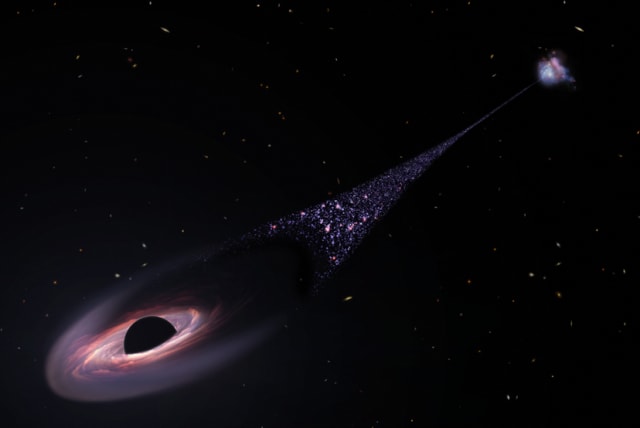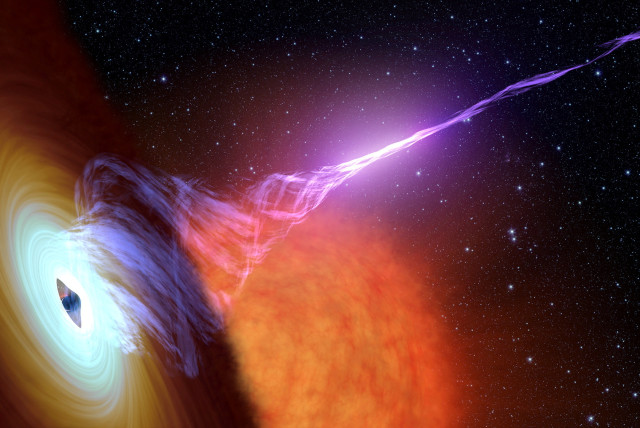Astronomers capture first image of a black hole expelling powerful jet

By observing the connection, scientists hope to better understand how black holes can launch energetic jets.
Astronomers have, for the first time, captured a single image of the shadow of a black hole at the center of the Messier 87 (M87) galaxy and the powerful jet it expelled.
The image, taken in 2018, was captured using telescopes from the Global Milimetre VLBI Array (GMVA), the Atacama Large Millimeter/submillimeter Array (ALMA) and the Greenland Telescope. The findings have been published in the journal Nature and are expected to inspire new research on black holes and their behavior.
By observing the connection between the base of a jet and the matter swirling around a supermassive black hole, scientists hope to better understand how black holes can launch energetic jets.
Previous observations had managed to image the region close to the black hole and the jet separately, but never together. The new image provides a complete picture of the region around the black hole and the jet, offering insight into how black holes create enormous jets.
Where was it found?

Located 55 million light-years away in our cosmic neighborhood, the M87 galaxy is home to a black hole that is 6.5 billion times more massive than the Sun.
The new image shows the jet emerging from the black hole and the shadow of the black hole. As matter orbits the black hole, it heats up and emits light, which is then captured by the black hole, creating a ring-like structure around it as seen from Earth. The darkness at the center of the ring is the black hole shadow, which was first imaged by the Event Horizon Telescope in 2017.
The GMVA network of radio-telescopes, along with ALMA and the Greenland Telescope, formed a virtual Earth-sized telescope that can discern small details in the region around the M87 black hole.
The new image shows radio light emitted at a longer wavelength than the EHT one: 3.5 mm instead of 1.3 mm, providing a more complete picture of the material that is falling towards the black hole.
These new observations of M87's black hole were conducted in 2018 with the GMVA network, which consists of 14 radio-telescopes in Europe and North America, with the addition of ALMA in the Southern hemisphere proving essential to capture this image.
Future observations using this network of telescopes will continue to reveal how supermassive black holes can launch powerful jets, allowing the team to better understand the complicated processes that happen near one of the most mysterious regions in the Universe.
Jerusalem Post Store
`; document.getElementById("linkPremium").innerHTML = cont; var divWithLink = document.getElementById("premium-link"); if (divWithLink !== null && divWithLink !== 'undefined') { divWithLink.style.border = "solid 1px #cb0f3e"; divWithLink.style.textAlign = "center"; divWithLink.style.marginBottom = "15px"; divWithLink.style.marginTop = "15px"; divWithLink.style.width = "100%"; divWithLink.style.backgroundColor = "#122952"; divWithLink.style.color = "#ffffff"; divWithLink.style.lineHeight = "1.5"; } } (function (v, i) { });
